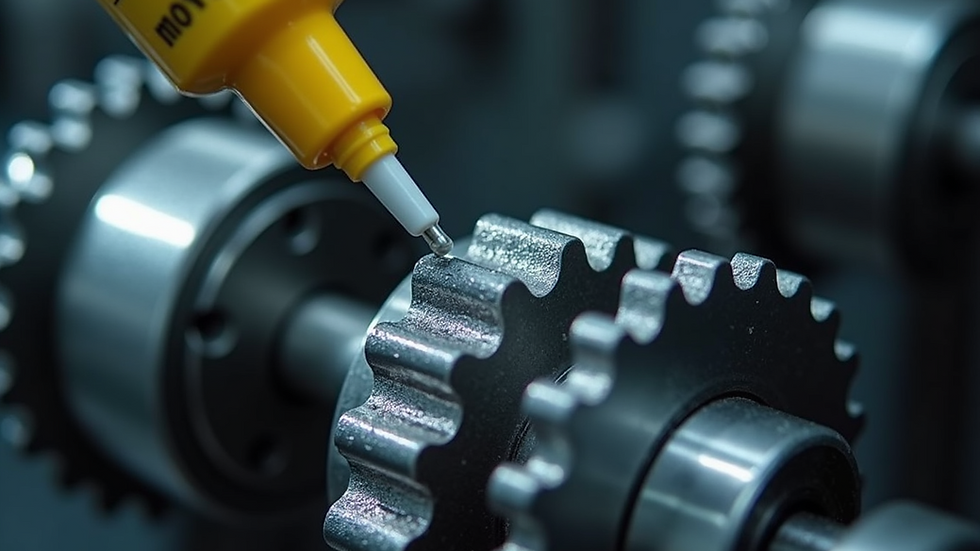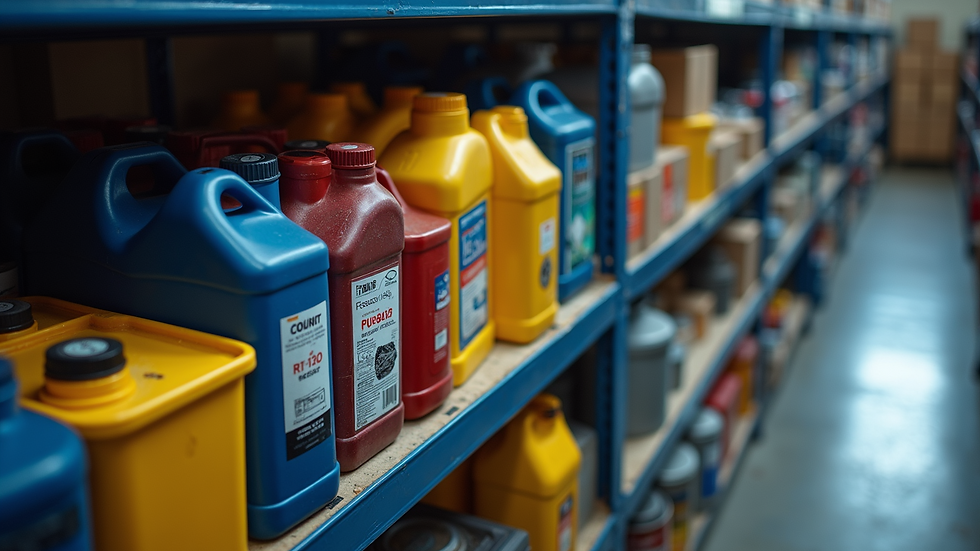Enhancing Operations with Technical Lubrication Services & Solutions
- H&B Industries

- Sep 16
- 3 min read
In industrial settings, smooth and efficient operations depend heavily on the right maintenance practices. One critical aspect often overlooked is lubrication. Proper lubrication reduces friction, prevents wear, and extends the life of machinery. I have seen firsthand how investing in technical lubrication solutions can transform operational efficiency and reduce downtime. This post explores how these solutions benefit industrial businesses and offers practical advice on implementing them effectively.
Understanding Technical Lubrication Solutions
Technical lubrication solutions involve selecting and applying the right lubricants tailored to specific machinery and operating conditions. These solutions go beyond generic oils and greases. They include advanced formulations designed to withstand extreme temperatures, heavy loads, and harsh environments.
For example, in a manufacturing plant, bearings and gears require lubricants that can handle continuous high-speed rotation without breaking down. Using a standard lubricant might lead to frequent replacements and unexpected failures. Technical lubrication solutions ensure the lubricant matches the machine’s needs, improving reliability.
Key benefits include:
Reduced friction and wear: Lubricants create a protective film between moving parts.
Extended equipment life: Proper lubrication delays the need for costly repairs.
Energy savings: Less friction means machines use less power.
Minimized downtime: Fewer breakdowns lead to more consistent production.

Implementing Technical Lubrication Solutions in Your Facility
To get the most from technical lubrication solutions, a systematic approach is essential. Here are the steps I recommend:
Assessment of Equipment Needs
Start by analyzing the types of machinery and their operating conditions. Consider factors like temperature, speed, load, and environment (dusty, wet, etc.). This assessment helps identify the specific lubricant properties required.
Selecting the Right Lubricants
Choose lubricants formulated for your equipment’s demands. For example, synthetic oils may be better for high-temperature applications, while greases with solid additives might suit heavy-load bearings.
Training Maintenance Staff
Proper application is as important as selection. Train your team on how to apply lubricants correctly, how often to reapply, and how to monitor lubricant condition.
Monitoring and Analysis
Use regular inspections and oil analysis to track lubricant performance. This helps detect contamination or degradation early, preventing damage.
Partnering with Experts
Collaborate with suppliers who offer comprehensive support and technical advice. They can provide tailored solutions and help optimize your lubrication program.
By following these steps, you can create a lubrication strategy that supports long-term operational success.

The Role of Technical Lubrication Services in Industrial Success
One of the most valuable resources for businesses is access to professional technical lubrication services. These services provide expertise in selecting, applying, and managing lubricants tailored to your operations. They often include:
On-site lubrication audits
Customized lubrication plans
Training programs for maintenance teams
Supply of high-quality lubricants and equipment
Ongoing technical support and troubleshooting
Using these services can significantly reduce the risk of equipment failure and improve overall productivity. For example, a company I worked with reduced their machine downtime by 30% after implementing a professional lubrication service plan. The experts helped identify the right lubricants and optimized application schedules.
Investing in these services is an investment in operational reliability and cost savings.
Common Challenges and How to Overcome Them
Despite the clear benefits, many industrial businesses face challenges when implementing technical lubrication solutions. Here are some common issues and practical ways to address them:
Inconsistent Lubrication Practices
Solution: Standardize procedures and document lubrication schedules. Use color-coded labels or automated lubrication systems to ensure consistency.
Incorrect Lubricant Selection
Solution: Consult with lubrication experts or suppliers. Use equipment manuals and industry standards as references.
Contamination of Lubricants
Solution: Store lubricants properly in clean containers. Use sealed dispensers and avoid mixing different lubricants.
Lack of Monitoring
Solution: Implement regular inspections and oil analysis programs. Use sensors or condition monitoring tools where possible.
Training Gaps
Solution: Provide ongoing education for maintenance staff. Encourage certification programs in lubrication management.
Addressing these challenges head-on ensures your lubrication program delivers maximum value.

Maximizing ROI with Technical Lubrication Solutions
To maximize return on investment (ROI) from technical lubrication solutions, focus on these actionable recommendations:
Invest in Quality Products
High-quality lubricants may cost more upfront but save money by reducing wear and extending service intervals.
Automate Lubrication Where Possible
Automatic lubrication systems deliver precise amounts at regular intervals, reducing human error.
Track Performance Metrics
Measure equipment uptime, maintenance costs, and lubricant consumption to evaluate effectiveness.
Plan for Long-Term Maintenance
Develop a lubrication strategy that aligns with your equipment lifecycle and production goals.
Leverage Supplier Expertise
Work closely with your lubricant supplier to stay updated on new products and technologies.
By applying these strategies, you can improve equipment reliability, reduce maintenance costs, and support sustainable growth.
Technical lubrication solutions are a critical component of efficient industrial operations. By understanding their importance, implementing best practices, and partnering with experts, businesses can enhance productivity and reduce costs. I encourage you to evaluate your current lubrication program and explore how advanced solutions can benefit your facility. Investing in the right lubrication strategy today will pay dividends in operational excellence tomorrow.





Comments